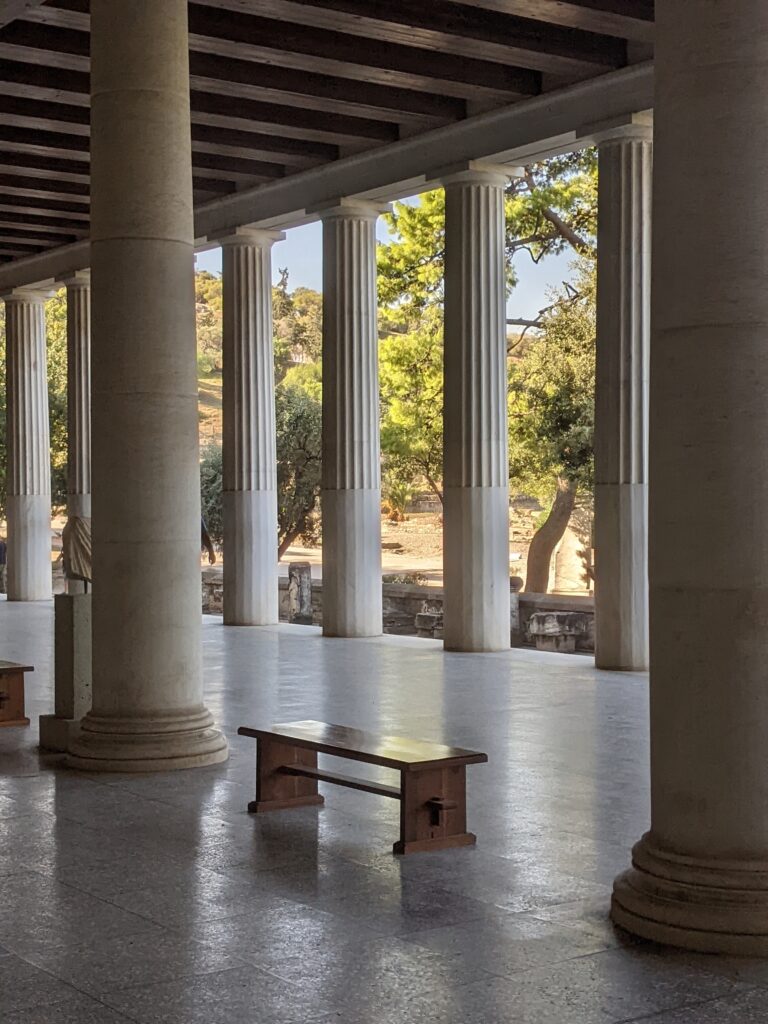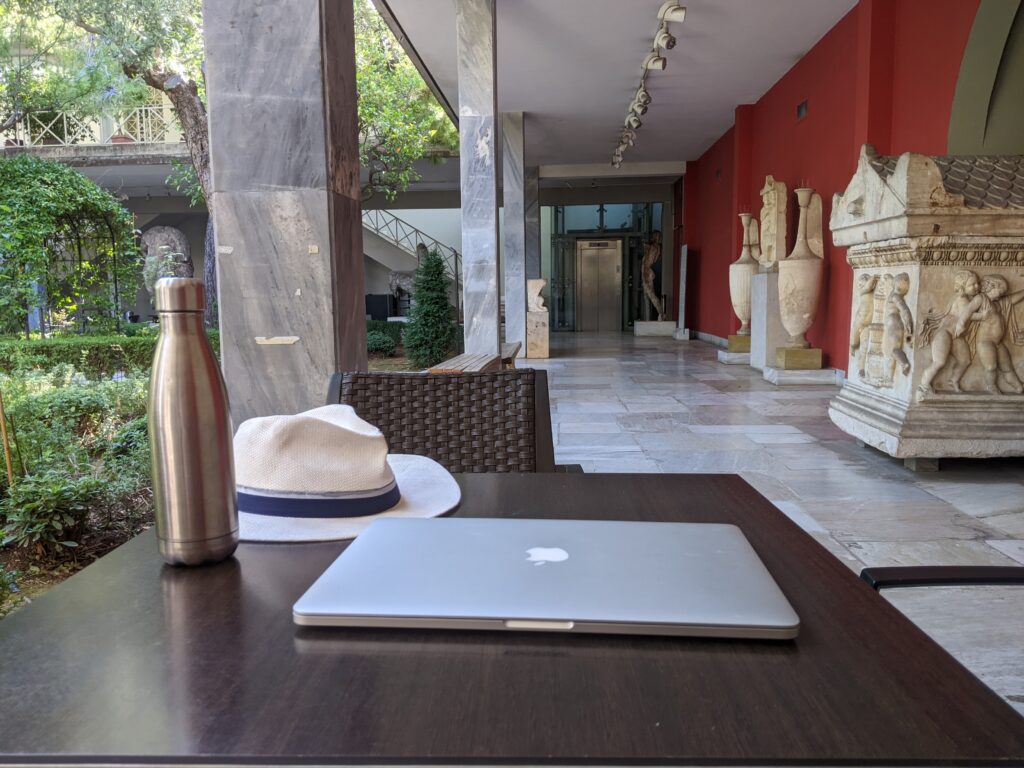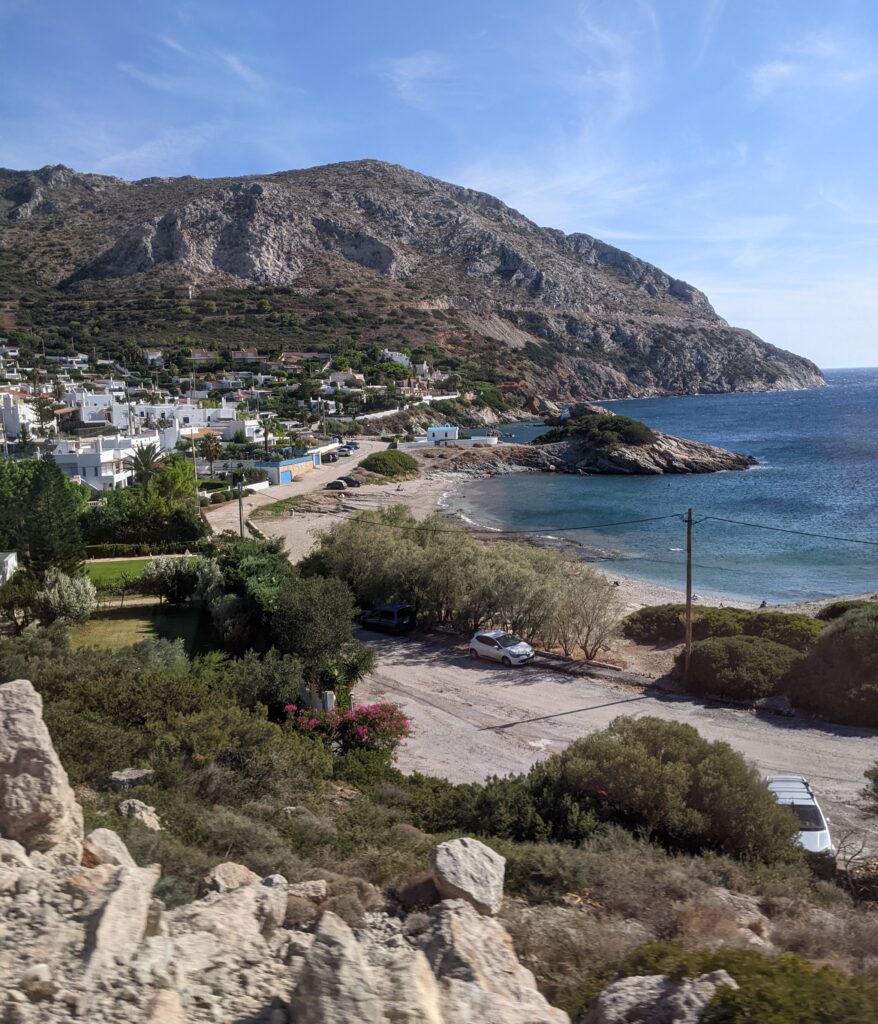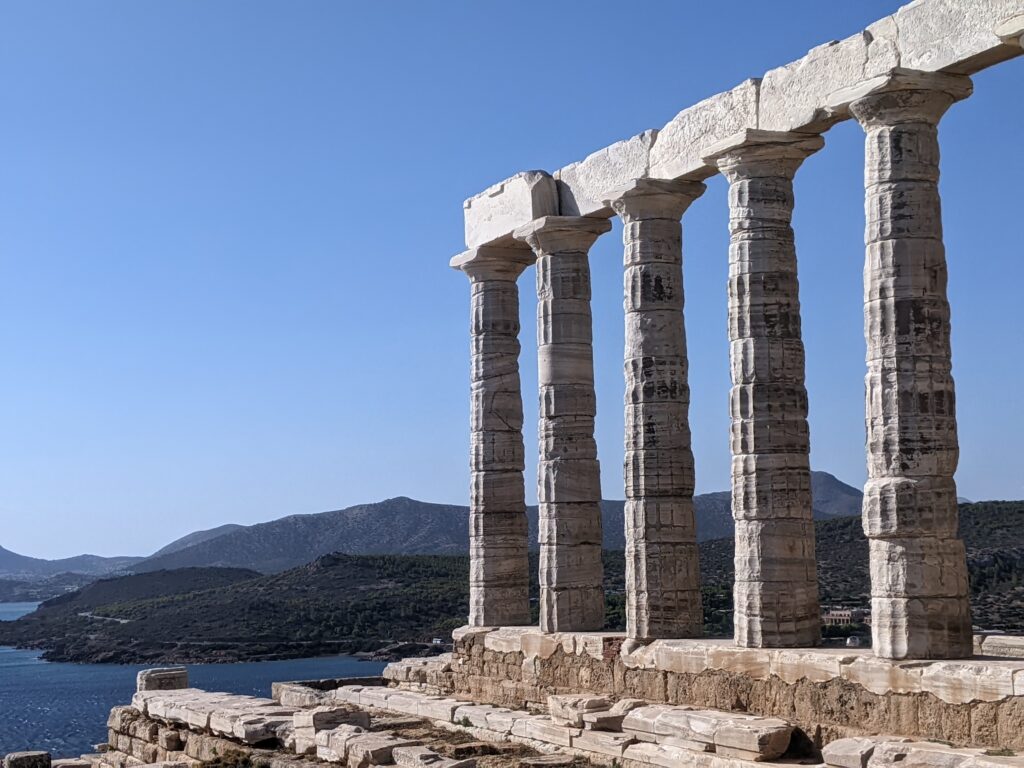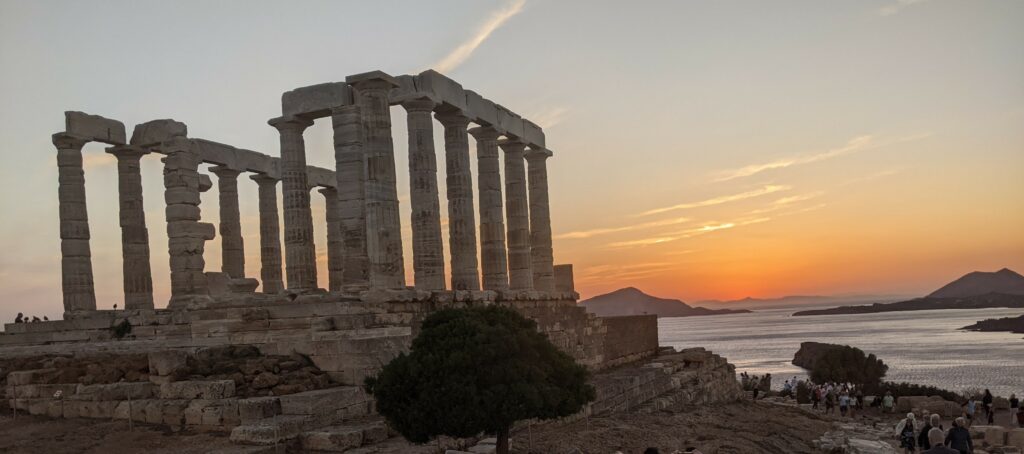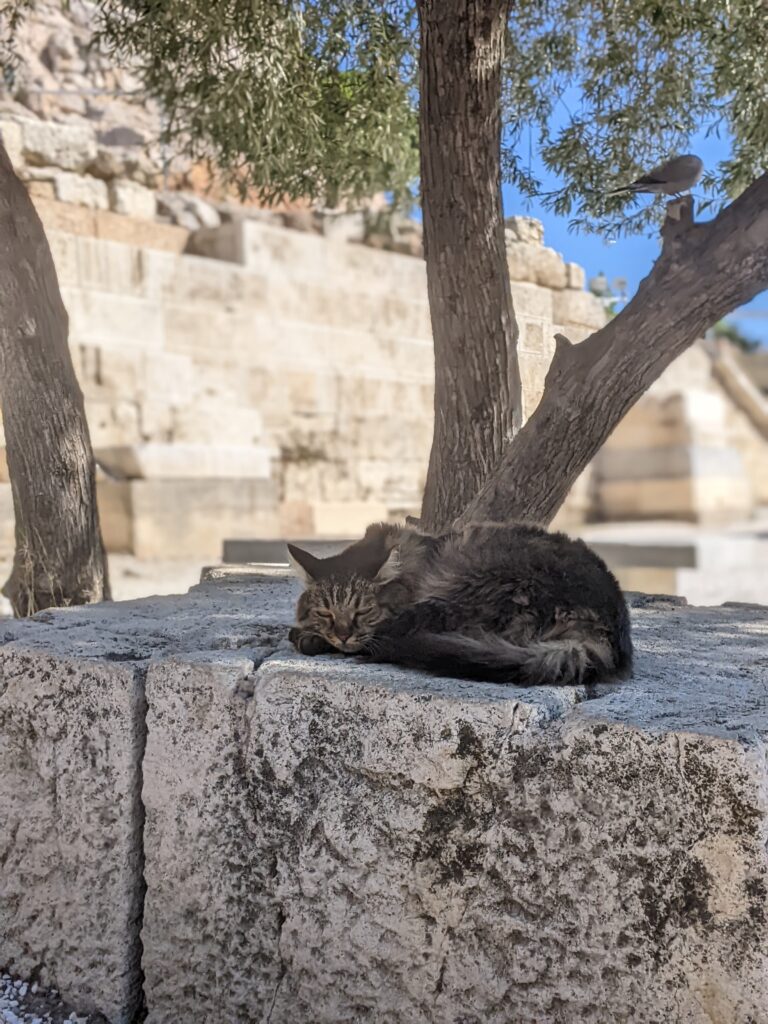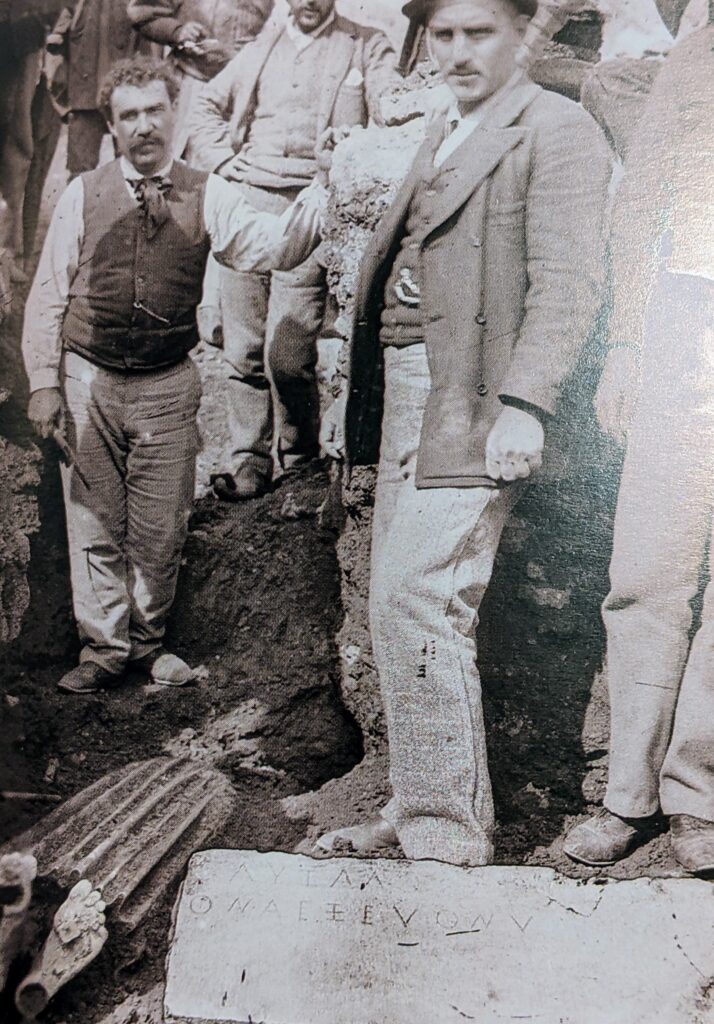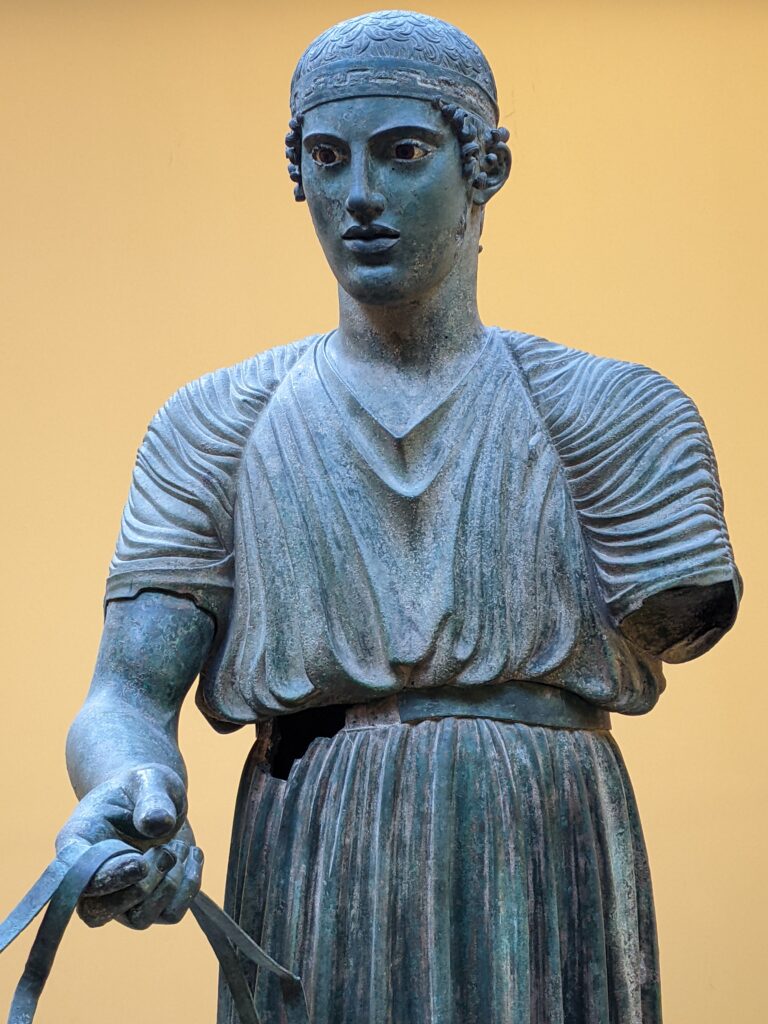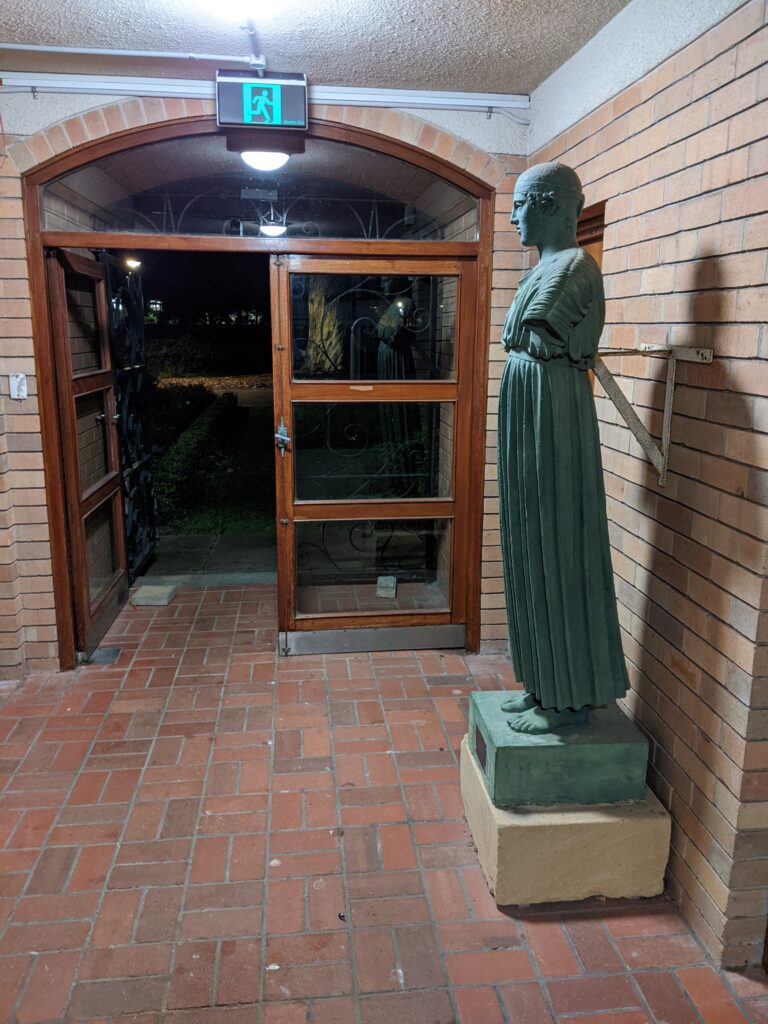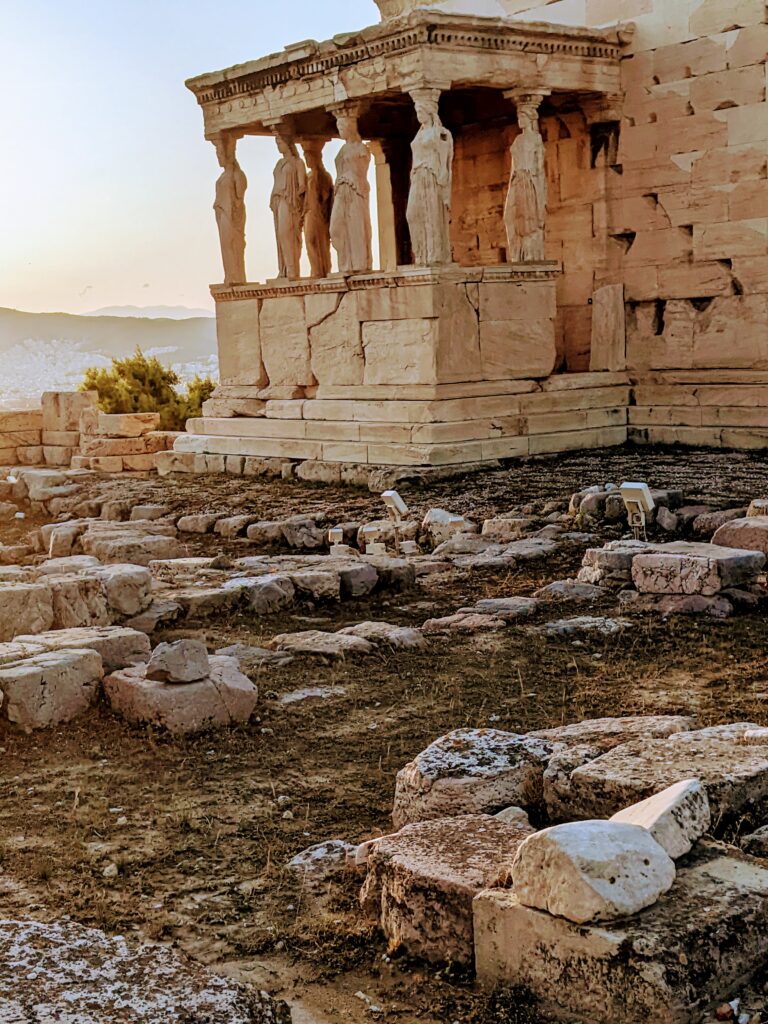I have come to Athens, my final port of call in my journey south across Europe. I sit in my room on the big green park, Pedion tou Areos, and look out of the window and see canopy, and beyond that, arid yet green hills. Of course I should add that: in all other directions I am hemmed by the concrete jumble and cacophony of traffic that is 2023 Athens, and my window is firmly closed to stop the sound of traffic from overwhelming me.
I leave Europe in a few days, and start my journey home to Australia. I have had moments of beauty and pleasure living in Europe this year, but also moments of loneliness. In Moby Dick, when the sea captain Ahab is old and grey and tired, tired of the chase, he turns to the character Starbuck and says: ‘stand close to me, Starbuck; let me look into a human eye; it is better than to gaze into sea or sky […] By the green land; by the bright hearthstone! this is the magic glass, man; I see my wife and child in thine eye’. As for Starbuck, now is the time for me to forego hazard. Ahab could see home in the human eye, and he could have been looking into mine.
Greece – that beautiful country that is sometimes sullied by the architectural and auditory manifestations of its capital. The Agora and the Temple of the Winds area and on top and on the south side of the Acropolis are parts of what redeems Athens as a city. Walking in these places early or late in the day without the crowds reminds one of classical greatness and the beauty of old Greece. Sometimes I think of Greek society as I felt about ancient Rome and modern Italy. Antiquity bears little relationship or apparent continuity with the loud, cigarette puffing societies of the present.
This morning I was sitting upstairs in the Stoa of Attalos in the Agora. It was cool and quiet. What a relief after what is more common at the moment in Athens – thirty degrees and loud crowds and roaring motorbike engines. I felt cool and spacious, stone under foot and soaring heights up to the ceiling. The feeling of spaciousness and tranquility that a stoa gives you on a sunny Mediterranean morning is a balm. We should replicate it at with a huge building at UWA. But of course no contemporary architect or university administrator would consider such an idea. This building was put up in the 1950s century with money from American benefactors (for example John Rokefeller gave a million US).
This stoa is a faithful reproduction of the stoa that was here in the time of the Stoics. When you are here you are wandering in a large open portico where those same philosophers and their school of wisdom take their very name. Zeno of Citium for example, may have walked here, the man who started this school. Stoic philosophy taught methods to reduce negative emotions such as fear and anger in life, and maximise positive emotions such as joy. I consider Stoicisim as one of the major contributions of Western civilisation to answering the question: How should we live? For proof I recommend reading A Guide to the Good Life: The Ancient Art of Stoic Joy by William Braxton Irvine (2008), or How to Be a Stoic by Massimo Pigliucci (2017).
As I sat there this morning, immediately ahead of me was about ten metres of stone floor, ending in a row of Ionic columns and a few hundred metres from the balcony I could see the Temple of Hephaestus. All was quiet. No tourists to be seen for the minute thank god. The Temple and the stoa and the agora slept in the sun of a September morning. Ancient and peaceful.
